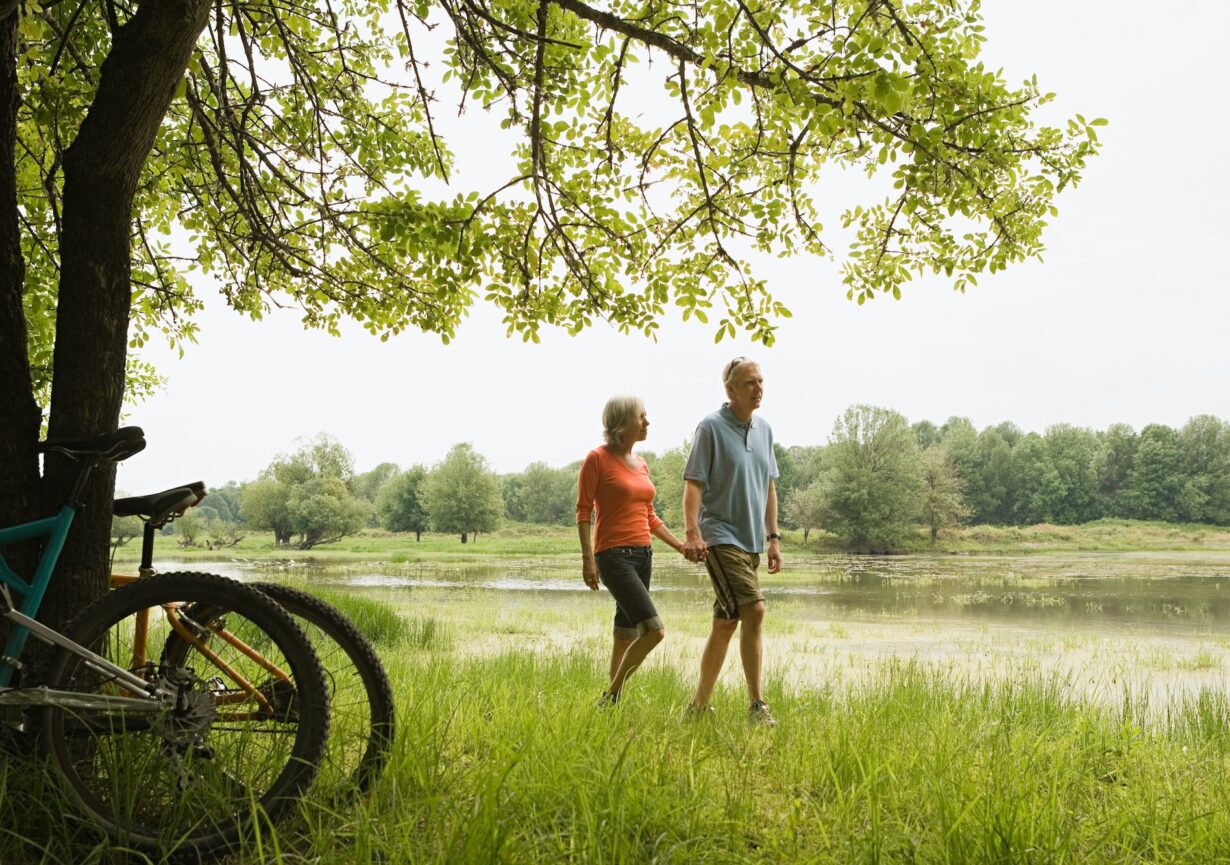Walking is a simple yet excellent strategy to enhance or maintain your health. In just 30 minutes a day, you can improve your cardiovascular fitness. This helps to strengthen your bones, lose weight, and increase your muscles and endurance. It can help you avoid illnesses like heart disease, type 2 diabetes, osteoporosis, and some malignancies. Walking, unlike several other types of exercise, is costless and requires no specific equipment or instruction.
Begin walking
Walking is a low-impact activity that requires little equipment, and you can do it at any time of day. The great part is you can do it at your own pace. You may go for a walk without the hazards that come with some of the more strenuous kinds of exercise. For persons overweight, older, or who haven’t been active in a long time, walking is an excellent type of physical activity. You can use a variety of clubs, places to make walking a fun and social aspect of your life.
Walking has numerous health benefits
When you walk, you are carrying your weight. Weight-bearing exercise is what it’s called. The following are some of the advantages:
- cardiovascular and pulmonary fitness (heart and lungs)
- Lewer risk of heart disease and stroke
- Ability to manage hypertension (high blood pressure), high cholesterol, joint and muscle discomfort or stiffness
- Better balance and stronger bones
- muscle endurance and strength
- lower body fat
30 minutes of daily walking
On most days, try to walk for at least 30 minutes at a brisk pace to get the health advantages. In the early days, you are likely to be puffing slightly if you’re brisk. Moderate physical activity, such as walking, has no health risk. However, if you have a medical problem, consult your doctor before beginning any new exercise program.
Including physical activity in your daily routine
If walking for 30 minutes a day seems daunting, break it into smaller chunks (10 minutes) three times a day. As you get used to it, gradually work your way up to longer sessions. If you want to reduce weight, though, you’ll need to accomplish more than 30 minutes of physical activity each day. You could begin with little bursts of exercise throughout the day and gradually increasing them as your fitness improves.
Physical activity is great when you include it in a daily lifestyle plan. Making it one of the most effective ways to help with weight loss and weight maintenance. Here are some ideas for incorporating walking into your everyday routine:
Instead of taking the elevator, take the steps (for at least part of the way)
- Get off one stop earlier on public transportation and walk to work or home.
- To get to the neighbourhood shops, take a walk rather than driving.
- Take your dog (or your neighbour’s dog) for a walk.
Include walking in your daily regimen
Make walking a habit by walking at the same time every day, for example. Remember that no matter what time of day you walk, you use the same amount of energy. Make sure you do what is most convenient for you. You might find that asking someone to join you on your stroll can help you stick to it. Some people find that keeping a daily activity diary or record helps.
Walking while wearing a pedometer
A pedometer counts how many steps you take. It can be used to track your activity throughout the day and compare it to previous days or recommended quantities. This may encourage you to exercise more. Ten thousand steps or more is the recommended number of steps per day to gain health advantages.
An appropriate level of exertion for walking
The amount of energy you expend by walking a kilometer or running a kilometer is similar for most people. However, the only difference is that walking takes longer. Plan to walk a certain distance each day and keep track of how long it takes you to complete it. You will be able to walk longer distances and utilize more energy as your fitness increases.
Walking quickly burns more calories per hour than walking slowly. However, that doesn’t imply you should push yourself to the point of exhaustion. Instead, take it slowly enough that you can still speak. This straightforward rule of thumb ensures that you walk safely within your desired heart rate, resulting in improved health. Because our bodies acclimatize to physical exercise, gradually raise the intensity of your workouts as your fitness improves. You can make your walks more intense by doing the following:
- Steep gradients such as hills
- Walking with weights on your hands
- By incorporating some brisk walking, you can progressively increase your walking speed.
- Before returning to a moderate walking pace, increase the distance you walk quickly.
- Walking over longer periods
- After a walk, warm up and chill down.
Walking slowly is the most excellent method to warm up. Begin each walk slowly to allow your muscles to warm up and gradually increase the tempo. Stretch your leg muscles, especially your calves and front and back thighs, afterward. Stretches should be held for 20 seconds at a time. If you experience any discomfort, stop stretching. If you bounce or jolt, you risk overstretching muscle tissue and causing microscopic rips, which can cause stiffness and pain in the muscles.
Suitable footwear for walking
Walking is a cost-effective and efficient type of exercise. However, wearing the wrong shoe or walking the wrong way might result in foot or shin pain, blisters, and soft tissue damage. Check that your shoes are comfortable and have good heel and arch support. Take small, gentle steps, making sure your heel lands first, then your toes. To absorb the impact, walk on grass rather than concrete whenever possible.
Walking the dog
A dog that requires daily exercise motivates you to stroll every day. You might enjoy the company as well. If you don’t have a dog and have no intention of obtaining one, offer to walk a neighbor’s dog on occasion.
Associations and clubs dedicated to walking
There are several walking clubs you could be interested in. Some cater to specific demographics (for example, ladies, dog walkers, or bushwalkers). Others provide an opportunity to meet new people in your neighborhood.
—
Choose walks that are appropriate for your age and level of fitness. To ease into and out of your exercise activity, warm-up and cool down with a calm, easy walk. When doing physical activities, it’s essential to wear them lightly. Overdressing might lead you to sweat more and raise your body temperature, making you uncomfortable throughout your stroll and possibly causing skin irritations. Muscle stiffness and damage can be avoided with a progressive cool-down.


